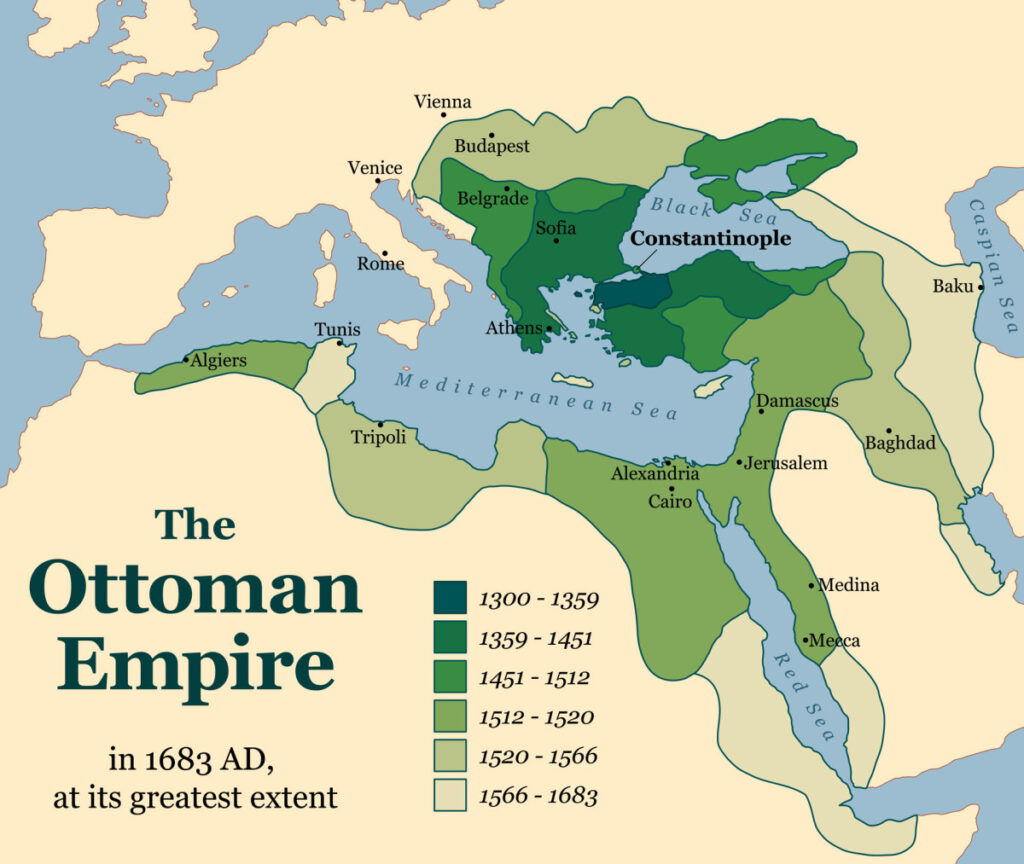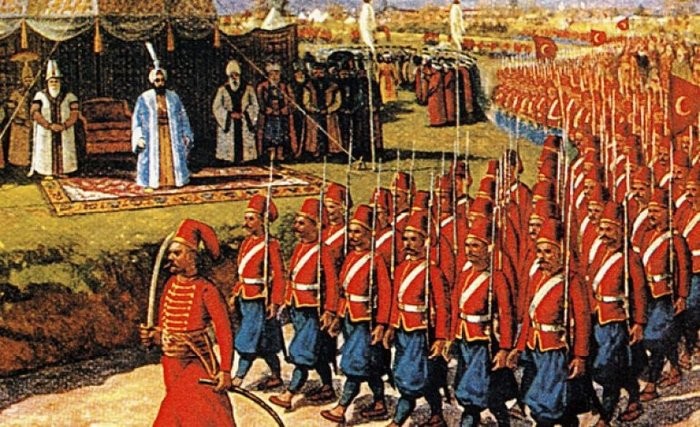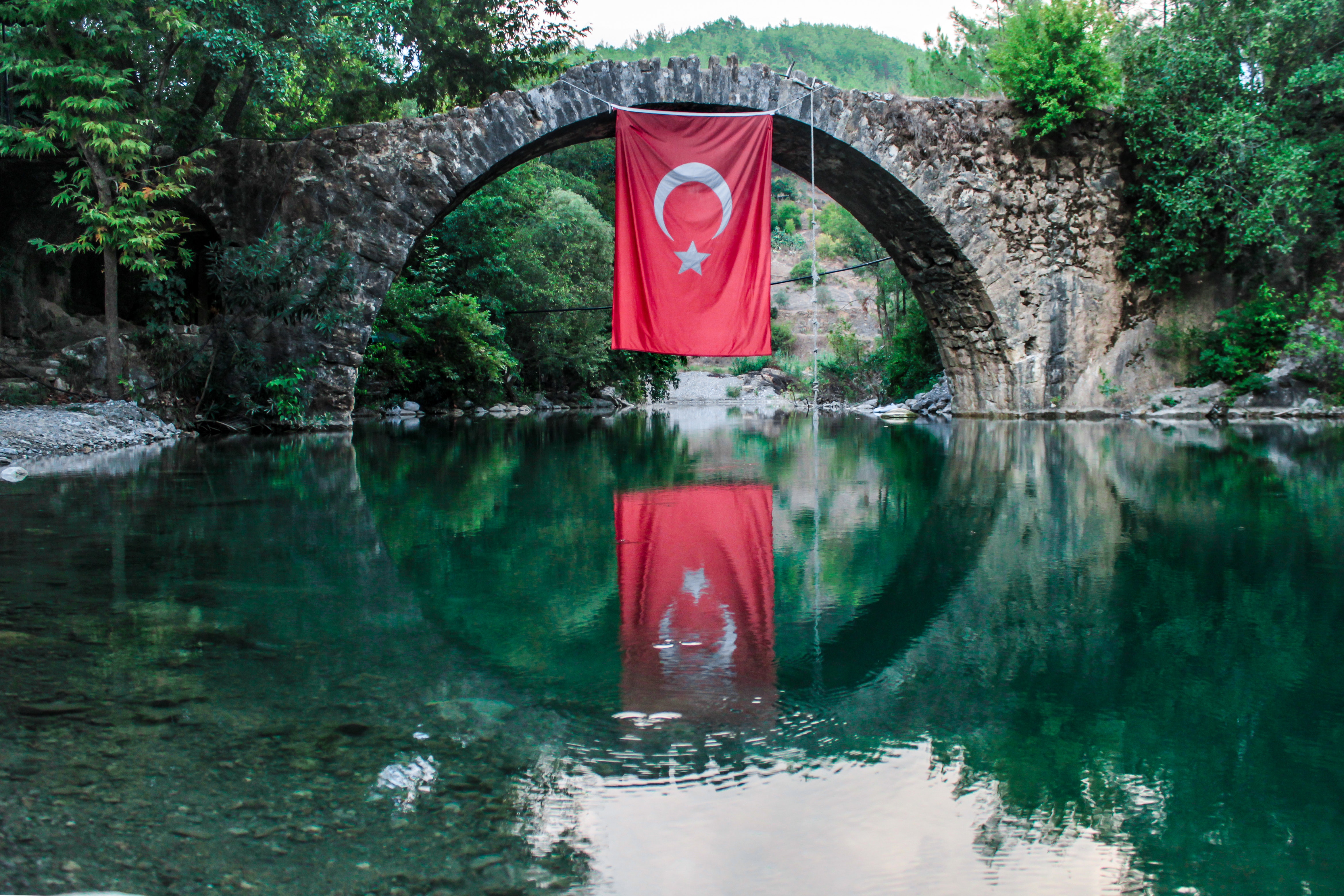For over 600 years, the Ottoman Empire occupied the gateway between the East and the West. At its zenith in 1522, the Empire lead by Sulieman the Magnificent, controlled a quarter of Europe (south east), in addition to the Anatolian Peninsula, the Levant, Arabia, and almost the entire coastline of Northern Africa.
However, this mighty Empire had very humble beginnings. It started as an ordinary principality in the northwest of Anatolia in 1299. At that time, the region of Asia Minor was part of the Seljuk Empire, until the Mongol Empire demolished them at the end of 13th century. The region was then broken up into dozens of small beyliks (principalities), each led by a different tribe.
It was a small principality in northwest Anatolia, where a descendent of the Kayi tribe, established a formal government and began to look at expansion. His name was Osman I, and out of his small territory, the Ottoman State was born. They would become known as the Ottoman Turks. Like their leader, the Turks were the descendants of various nomadic tribes of Turkmen from Central Asia (the lands now known as Turkmenistan).
The Ottoman Empire had an enormous influence on European and World History. Tragically, this has been either forgotten or omitted in the west, which always saw the Ottomans as nothing more than a temporary nuisance to a Christian continent.
MAJOR POWER
For centuries, the Ottoman Empire controlled the areas where eastern and western trade routes came together. This presence would lead to the two biggest developments in Europe’s history, which would end up affecting the entire planet.
The first was the cultural advances of the Renaissance. In fact, it was inside the Ottoman Empire that the first vaccines were developed. Vaccine use would later spread across Europe, thanks mainly to the wife of the British ambassador to the Ottomans, Lady Montague. Such was their advancement in medicine, that many surgical instruments first used by the Ottomans are still in use today, such as scalpels, forceps etc
The second, was the Era of Exploration. This began with Spain and Portugal looking to find an alternative route to the east, by ship. They would later be joined by France, Britain, the Netherlands and more. This exploration lead to the completion of the world map, and extensive colonisation in Africa, the Americas, Oceania and Southern Asia.
The Ottomans were also very progressive in terms of ethnic and religious diversity. While citizens were expected to follow Sharia law in their private lives, the laws of the state (called Kanun, meaning “book of law”) were essentially secular and universal. This was a pragmatic choice because it avoided any problems with the sizeable Christian and Jewish minorities. These groups were generally accepted by the Empire, even though they wouldn’t be considered equal with their Muslim countrymen.
Later on, the Ottomans would accept Jewish refugees from Spain after their 1492 expulsion, and formed a long term military alliance with the Christian Kingdom of France, in 1536. This was significant, as it was the Ottoman Army who crushed one of the final Christian Crusades to the Holy Land, in 1396.
14TH & 15TH CENTURIES
At the beginning of the Ottoman Empire, the Eastern Hemisphere was leading the West in terms of the arts, culture, science, literature, architecture, economics and military capability. Following the Golden age of Islam (8th to 13th Century), The Ottomans saw themselves as the rightful successors the Roman Empire. They too would try to unite east and west under one religion, only this time it was Islam.
Standing in their way was the centuries old Byzantine Empire, aka The East Roman Empire. The capital of the Byzantine Empire was Constantinople – a grand city which was known as the “New Rome”, and would become the cradle of Eastern Orthodox Christianity. The Byzantine’s were eventually overpowered by the Ottoman Empire, and the city was taken in 1453, and renamed Istanbul. It would now serve as the new capital of the Ottoman Empire. Today, Istanbul is still the biggest city in Europe.
In 1324, Sultan Orkan I started to significantly expand throughout the rest of Anatolia. By 1354, the Ottomans had gained a foothold in Europe, when they conquered the Gallipoli Peninsula. Military success would continue in South Eastern Europe, and in 1361, the city of Adrianople (Erdine) was taken, and became the official capital of the Empire.
Two years later, Sultan Orhan I, created an elite sultanate guard called the Janissary. In 1363, they had just over 1000 troops. By 1609, it had grown to over 37,000. The Janissary were a formidable military unit in the early years, but later became privileged, lazy, and lustful for power.
They revolted several times, usually when they grew tired of a particular Sultan. Eventually, their hubris caught up with them. After resisting the Sultans efforts to modernise the Army, the Janissary was abolished and its leaders executed, by Mahmud II in 1826.
By 1380, the Ottoman’s were continuing to expand from Europe towards the Middle East. In 1389, they cemented their supremacy in the Balkans, with a decisive victory at the Battle of Kosovo. However, the next decade saw the Empire’s first major defeat, when Sultan Bayezaid I tried to expand into Persia, but was stopped by another Muslim Army, the Tatars, commanded by Timur.
The Sultan would end up being taken prisoner. This destabilised the Ottoman Empire, which descended into the only civil war in its history. It was during this chaotic period that much territory was lost by the Empire. In 1413, Mehmed I would emerge as the victor and the new Sultan. For the next 40 years, both Mehmed I and his son Murad II, would reform Ottoman society, and win back all of the territory it had lost.
CONSTANTINOPLE
The spread of the Ottomans in Europe, led to many interfaith marriages between Christian Nobles and Muslim Nobles. This would have a huge impact on the culture, ethics and philosophy of European Christianity. By 1453, the ever increasing Empire was still bisected by one small area – the city of Constantinople.
Mehmed II, aka The Conquerer, would take the grand old city when his 100,000 strong Army annihilated the 10,000 troops guarding the Byzantine Capital. The largest Cathedral in the city, the Hagia Sophia, was later converted into a mosque. The Architecture of the Hagia Sophia, would influence the construction of large religious buildings for centuries. This military victory signalled the end of the Byzantine Empire.
Anytime the Ottoman’s embarked on a military campaign, parliament was held in the presence of the Sultan. Matters were discussed in detail, with every member having a say. Once the decision was made, the call then went out to the Provincial Governors and Judges to prepare for battle.

16TH & 17TH CENTURIES
The 16th Century was the Ottoman Empire’s golden period. The first decade saw the Ottomans gain the region of Crimea, and significantly enhance their Naval power, resulting in a decisive victory over the Venetians. In 1515, they began to expand south, into the Middle East.
By 1517, Sultan “Selim the Grim”, acquired Syria, Egypt and Arabia from the last of the Marmuk Dynasty. By 1520, he had taken the Levant and stretched the Empire as far as Mecca in Asia, and Algiers in Africa.
On the 30th of September of that year, Selim’s eldest son, Sulieman I became the 10th Sultan of the Ottoman State. His 46 year reign saw the Empire reach its peak. He would become known as Sulieman the Magnificent. Under his governance, he ruled over 25 million people, spread across 3 continents.
In 1526, he obliterated the powerful Hungarian military at Mohasco, consolidating the Ottomans dominance throughout South Eastern Europe. His Naval fleet exercised control over the Mediterranean, the Red Sea, and now the Persian Gulf.
His success is perhaps best described by the following inscription:
I am Gods slave and Sultan of this World. By the grace of God I am head of Mohammed’s community. God’s might and Mohammed’s miracles are my companions. I am Caliph in Mecca and Medina. In Baghdad I am the Shah, In Byzantine realms the Caesar and in Egypt the Sultan; who sends his fleets to the Seas of Europe, North Africa and India. I’m the Sultan who took the crown and throne of Hungary and granted them to a humble slave…..
Though his armies never got past Vienna, Sulieman expanded the empire through the horn of africa and through the Middle East to the gulf. His reign was also a time of social and economic reforms and advances in arts and education.
PROBLEMS LIKE PERSIA
The beginning of the 16th century also the rise of the Safavids in Persia. The Ottomans waged a 23 year war against this new enemy. The Safavids were always ideologically opposed to the Ottomans. Perhaps because the Safavids were Shia Muslims, whilst the Ottomans were Sunni?
Whatever the reason, Persia was the one nut that the Ottomans couldn’t crack. Whilst Sulieman enjoyed many victories over the Safavids on the battlefield, the conflict ultimately ended in stalemate, with a treaty signed by both empires in 1555.
The second half of the 16th century saw mixed fortunes for the Empire. The cost of constant War caused many economic problems, particularly with inflation. Fortunately, a series of restorations by Sultan Selim III got the Empire back on track.
In the 1570’s, the Ottomans acquired the African territory of Tunis, and the islands of Crete and Cyprus. However, they suffered a major naval defeat at Lepanto, courtesy of the Spanish and the Venetians. In addition, when Ottoman regiments in Crimea headed for Moscow, they were brutally repelled by the Russian Empire.
By the start of the 17th Century, the Ottomans made gains in North Eastern Africa and the Arabian peninsula. But there would be trouble back in the capital, when in 1622, a palace uprising by the power hungry Janissaries, ended in the murder of Sultan Osman II, and the return of Mustafa I to the throne.
A spate of conflicts in 1682-99 saw the Empire take a further pounding in Europe from the Hapsburgs and the Russians. This caused great loss of territory on the continent, which they would never regain. The treaty of Karlowitz in 1699, marked the beginning of the Ottomans decline.

18TH & 19TH CENTURIES
The period from 1703-30 was predominantly peaceful, as the Ottomans began to engage more in diplomacy. This became known as the Tulip Era, due to the penchant that members of the Empire’s high society had for wearing Tulips in public.
But the fighting didn’t completely cease – particularly in the Balkans – were the Ottomans suffered heavy losses. Despite the collapse of their local rivals the Safavids, in 1722, the Ottoman Empire still never took the region of Persia.
The late 18th century saw more losses for the Ottomans. The 1770’s, saw the Empire humiliated further, as the Russians took away Crimea and moved south into the Levant, becoming the new guardians of Christian sites in the holy land.
Despite the setbacks, the Ottoman Empire was still a major power in 1800. The first 20 years of the 19th century, saw a large chunk of Arabia fall into the Sultan’s hands, albeit with difficulty. In 1822, the Ottoman’s made gains in the Sudan. But overall, the late 19th century saw great losses of territory in Europe and Africa.
The Empire became lazy and decadent, and fell behind Western Europe, both militarily and economically. Christian Empires like Russia and Hungary also tried to defeat the Ottomans, not just on battlefield, but by surreptitiously feeding the Ottomans internal divisions.
TANZIMAT
Sultan Abdulmecid I attempted to remedy this situation in 1839, with a series of reforms known as Tanzimat. This was the biggest attempt yet to modernise and liberalise the Ottoman state. The Empire had always been divided into provinces, each run by a Governor who was appointed by the sultanate.
The reforms would established a new hierarchy of administrative civil units. Religious laws would be replaced by secular laws. In 1856, the Ottoman Bank was founded in Istanbul. But weak and unregulated commercial agreements signed with other major nations, saw the decline of many Ottoman industries.
Tanzimat ended in 1876. Hopes of a progressive future were destroyed by internal conservative opposition combined with several financial crises, and a series of rebellions by non-muslim citizens, particularly in the Caucasus regions.
In reaction to all of this madness, The Ottoman Turks become more nativist, leading to new discriminatory citizenship laws that persecuted Christians and Jews. This ugliness would eventually result in the genocide of around 1 million Armenian Christians.
Although, there was some successful political modernisation. In 1876, the Empire transitioned from an Absolute Monarchy to a Constitutional Monarchy. The Grand Vizier (Prime Minister) was given more power, and whilst he could now pick his own cabinet, the Sultan would still pick the Minister of War, and the Minister of the Navy.

20TH CENTURY & THE END OF EMPIRE
By 1912, the Empire had no territories left in Europe or Africa. It occupied only Asia minor, and parts of the middle east. In October of 1914, the Ottoman’s made their final, and biggest mistake, by aligning with Germany in the Great War. Their belief was that a victory for the Central Powers could get the Empire its old European territories back.
But it wasn’t to be. In November 1918, the British Army marched into Constantinople, and the War was lost. The Empire was dissolved by the Allies, and the Ottoman state would pass into history. The Anatolian peninsula, now patrolled by Allied soldiers, was all that remained. It would be consolidated into the new nation of Turkey.
In 1922, the Sultanate would be abolished for good, and in 1923, the Republic of Turkey was born. The republics first leader, the great Kemal Ataturk, established Ankara as the new Capital. He then booted out the remaining Allied occupiers, and set up a modern, secular, unitary and parliamentary republic.
THE REGION TODAY
A series of coups in the late 20th century destroyed Ataturk’s legacy, and at the time of writing, Turkey is under an authoritarian government.
The little known 1916 deal between Britain and France, known as the Sykes-Picot agreement, carved up the former Ottoman territories in the Middle East, and put them under Allied administration. The British took Iraq, Kuwait, Jordan, Israel and Palestine. The French took charge of Lebanon and Syria, whilst the Russians temporarily controlled eastern Turkey.
The arbitrary new national boundaries that were drawn up, saw some groups divided up amongst several new nations – like the Kurds. They also clumped together some fierce rivals like the Sunni Arabs and Shia Arabs. Some of the worst geo-political situations that have occurred in the last 50 years can be traced back to this deal.
Turkey in present day is transcontinental, covering the large region of Anatolia (Asia), and the small region of Thrace (Europe). These are separated by the Bosporus Straight, aka The Straight of Istanbul, which is only 700 metres wide.
Although it passed into history over a century ago, the Ottoman Empire still casts a very long shadow over the present. In both the region of Eurasia, and all around the world.

1927 Statue of Kemal Ataturk in Ankara

